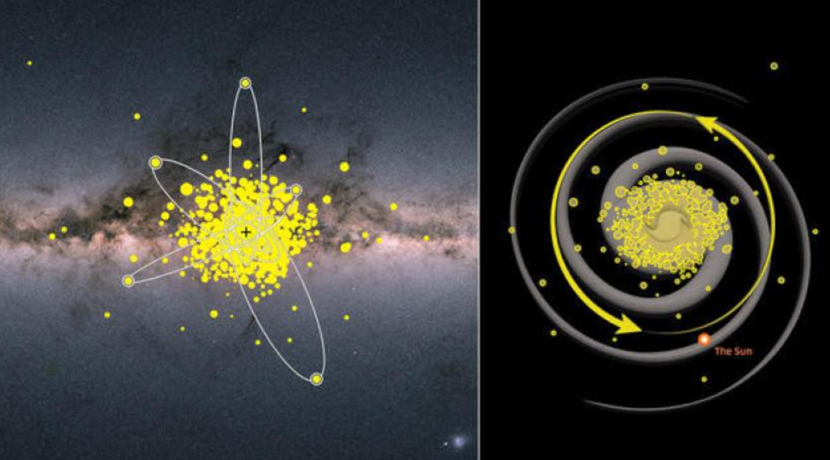12 billion years
Robert Klatt
Old stars in the inner region of the Milky Way
)0.4YB CC – egdirbmaC, ymonortsA fo etuitsnI, nestnerA eknA dna htimS.J adnamA: noisserpmi s’tsitra, aiaG/ASE(Photo: ©
Ancient stars allow us to look back to the early days of the universe. Astronomers have now pulled together the most comprehensive collection of ancient stars from the center of the Milky Way, making surprising observations in the process.
Cardiff (Wales). Some of the stars that formed in the first billion years after the Big Bang are still around today. They allow astronomers to study what galaxies looked like when they were just beginning to form. They are identified by their chemical composition, which is mainly hydrogen and helium and contains much less heavy elements than younger stars such as the Sun. They are primarily searched for in the lower halo density around our galaxy because they are easier to find there.
However, models of galaxy formation show that the oldest stars must be found in the dense inner regions of the Milky Way. However, spotting them in this region is difficult because the view of the galactic center is obscured by large amounts of interstellar dust and old stars are extremely rare compared to the majority of young stars there.
Map of the oldest stars in the Milky Way
Researchers from the Pristine Inner Galactic Survey (PIGS) team, led by Dr. Anke Arentsen of the University of Cambridge, according to Royal Astronomical Society (RAS) presented a comprehensive map of the oldest stars in the center of the Milky Way at the National Astronomy Meeting at Cardiff University in 2023. The detected stars rotate slowly around the center of the galaxy, although they are believed to have formed in a chaotic manner. They also seem to spend most of their long lives near the center of the galaxy.
Filter images on the Canada-France-Hawaii Telescope
The ancient stars were detected thanks to a special image filter on the Canada France Hawaii Telescope (CFHT), which makes it possible to efficiently pre-select candidate stars. Subsequently, the identity of the stars was confirmed by spectroscopic observations with the Anglo-Australian Telescope (AAT). Thus, the researchers working with Arentsen have been able to make the most comprehensive set of detailed observations of stars in the galaxy’s original inner region to date.
“It is exciting to think that we are seeing stars that formed in the early stages of the Milky Way, previously largely inaccessible. These stars likely formed less than a billion years after the Big Bang, making them remnants From the early universe. The data available for these ancient objects is growing rapidly. I’m excited to see what we’ll learn about these first stars populating our galaxy over the next few years.”
The Gaia space mission reveals the motion of the stars
The PIGS observations were then combined with data from the Gaia space mission to study how these ancient stars moved through the Milky Way. It turns out that the older the stars get, the more chaotic their movements are, but even the oldest stars still show a rate of rotation around the galactic center. They also showed that many of these stars spend most of their lives in the inner reaches of the galaxy, in a ball that extends only halfway between the galactic center and the sun.

“Social media evangelist. Baconaholic. Devoted reader. Twitter scholar. Avid coffee trailblazer.”







More Stories
A company warns NASA against launching the “Starliner” with astronauts – “risk of disaster”
Nintendo relies on organic growth of development resources – SHOCK2
In Ear Momentum Sport technology measures heart rate